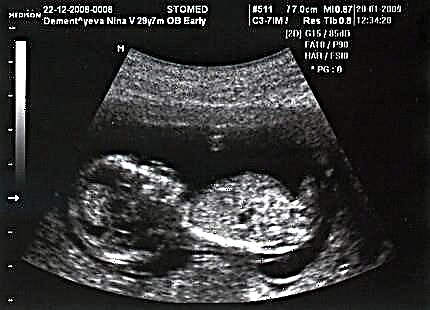
"Methyluracil" is called a stimulant of tissue repair and cell growth, so it is often used for adults after surgery, with poor wound healing, peptic ulcer and other pathologies. Of course, you should first study the instructions for use in detail. However, not everyone knows if such a medicine can be used for children.

Form of release of the drug and composition
"Methyluracil" is produced by different pharmaceutical companies in three dosage forms:
- Pills. They are sold in a pack of 10 to 100 pieces, they are round in shape and white.

- Ointment. Such a drug is packaged in tubes or jars of 25-30 g.

- Suppositories. One package contains 5 or 10 rectal torpedo-shaped candles of white, cream or yellowish color.

The action of each type of drug is provided by dioxomethyltetrahydropyrimidine (this compound is also called methyluracil). In one tablet (as in one candle), it is presented in a dosage of 500 mg, and in 1 g of ointment - in an amount of 100 mg.

Additionally, tableted "Methyluracil" includes povidone, potato starch, talc and other compounds. The ointment contains lanolin, water and petroleum jelly, and suppositories contain solid fats.
Operating principle
Methyluracil has the following properties:
- to activate metabolic processes in different tissues;
- stimulate epithelialization and cell growth, improving regeneration;
- improve tissue trophism;
- stimulate the formation of white and red blood cells in the bone marrow;
- normalize the exchange of nucleic acids;
- reduce the activity of the inflammatory process;
- stimulate humoral and cellular immunity.
The tablet drug has a systemic effect. Such "Methyluracil" affects the body completely. Suppositories affect mainly the small pelvis and intestines, and the ointment affects the mucous membranes and skin.
Indications
"Methyluracil" tablets are used for:
- mild leukopenia - for example, due to medication or radiation therapy;
- anemia;
- gastrointestinal ulcer;
- radiation sickness;
- stomatitis;
- burns;
- recovering from a severe infectious disease;
- hepatitis or pancreatitis;
- agranulocytic angina;
- intoxication with benzene;
- thrombocytopenia;
- poor wound healing;
- bone fractures.
Suppositories for children are used for colitis, hemorrhoids, proctitis, sigmoiditis. The ointment is prescribed to babies who have burns, cuts, synechiae, fractures, trophic ulcerative lesions, postoperative sutures, as well as wounds that heal for a very long time and with difficulty.
At what age is it prescribed?
Tableted "Methyluracil" is approved for children who are 3 years old. The preparation in the form of an ointment can be used from birth. Suppositories are prescribed from the age of three.

Contraindications
Any form of the drug is not used for patients with hypersensitivity to any ingredient. "Methyluracil" tablets are also not prescribed for children:
- with leukemia;
- with hemoblastosis;
- with lymphogranulomatosis;
- with malignant tumors in the bone marrow.
Side effects
Taking methyluracil tablets can provoke heartburn, allergies, dizziness, or headaches. The ointment occasionally causes an allergic reaction. Suppositories can cause allergies, itching or burning sensations.

Instructions for use
The drug in tablets is given to the child to drink after meals or during meals. The medicine is taken three times: at the age of 3 to 8 years - half a tablet, at the age of 8-14 years - 1 / 2-1 tablet. A teenager over 14 years of age is given a medication in a whole tablet (four times a day). The duration of treatment with "Methyluracil" is determined for each case separately. The longest courses are prescribed for diseases of the gastrointestinal tract.

The ointment is applied to the affected skin and the area near the injury. Usually, before such treatment, an antiseptic rinse is performed and the wound is cleaned of contamination. After applying the ointment, a sterile gauze bandage is applied. The frequency of changing such dressing and lubrication is determined by the nature of the damage. The medication is used until complete healing.

"Methyluracil" in suppositories is administered rectally, after a bowel movement - once a day. The dosage for a child 3-8 years old is half of the suppository, and for children over 8 years old, one whole suppository is prescribed. The duration of treatment is several days and 3-4 months.
Overdose and drug interactions
The negative effect of the exceeded dose of "Methyluracil" is not observed. When the tablets are combined with "Cystamine", the antiradiation effect of this drug is enhanced.
Terms of sale and storage
To purchase "Methyluracil" in tablets or suppositories, you must first get a prescription from a doctor, and the ointment is classified as an over-the-counter drug. The average price of 50 tablets is 190 rubles, a tube of ointment is from 30 to 90 rubles.

You need to store candles and tablets at temperatures below +25 degrees - in a place hidden from sunlight, where children cannot reach them. The recommended storage temperature for the ointment is from +8 to +15 degrees. The shelf life of tablets is 5 years, candles - 2 years, ointments - 3.5 years.
Reviews
Usually, reviews of the treatment of children with "Methyluracil" are positive. Moms say that such a remedy really speeds up healing and recovery, and side effects are extremely rare.

Analogs
Instead of "Methyluracil" (depending on the reason for its use and the age of the patient), the doctor may prescribe Imudon, Wobenzym, Galavit, Cycloferon, Levomekol and many other drugs. They include other active compounds, so the choice of an analogue should be made with the pediatrician.


You can also watch a detailed video review of a specialist about this drug.



